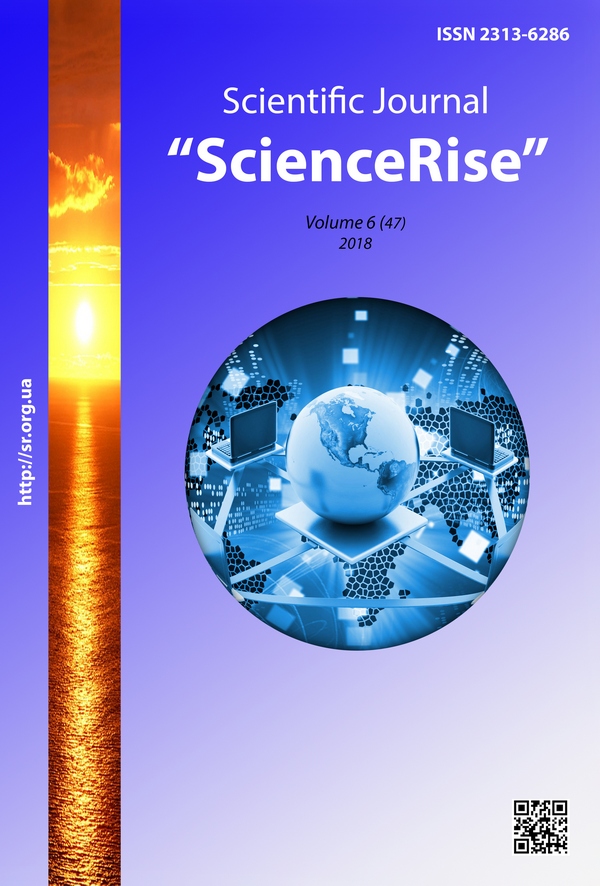The investigations of equitability of microelements distribution in the volume of emulsion type sauces enriched by dietary additives
DOI:
https://doi.org/10.15587/2313-8416.2018.134393Keywords:
emulsion type sauce, dietary selenium-protein supplements, system waterAbstract
The equitability of microelements distribution in the volume of emulsion type sauces enriched by dietary supplements was investigated by the EPR-method. The homogeneity of the distribution of the label and the introduced microelements of the dietary supplement in the volume of the studied food systems in the containers with dimensions up to 60 mm is proved. The insignificant effect of sedimentation on the uniformity of the structure water system and the distribution of the label and microelements of the added additive is established during the recommended storage periods
References
Katz, D. L., Meller, S. (2014). Can We Say What Diet Is Best for Health? Annual Review of Public Health, 35 (1), 83–103. doi: http://doi.org/10.1146/annurev-publhealth-032013-182351
Druzhilov, S. A. (2016). Zdorovyy obraz zhizni kak tselesoobraznaya aktivnost' cheloveka. Sovremennye nauchnye issledovaniya i innovatsii, 4 (60), 654–648.
Lean, M. E. J. (2015). Principles of human nutrition. Medicine, 43 (2), 61–65. doi: http://doi.org/10.1016/j.mpmed.2014.11.009
Melina, V., Craig, W., Levin, S. (2016). Position of the Academy of Nutrition and Dietetics: Vegetarian Diets. Journal of the Academy of Nutrition and Dietetics, 116 (12), 1970–1980. doi: http://doi.org/10.1016/j.jand.2016.09.025
Rizzo, N. S., Jaceldo-Siegl, K., Sabate, J., Fraser, G. E. (2013). Nutrient Profiles of Vegetarian and Nonvegetarian Dietary Patterns. Journal of the Academy of Nutrition and Dietetics, 113 (12), 1610–1619. doi: http://doi.org/10.1016/j.jand.2013.06.349
Pertsevoi, F. V. et. al.; Pertsevoi, F. V. (Ed). (2011). Tekhnolohiia kharchovykh produktiv na osnovi drahleutvoriuvachiv z yakisno zminenymy funktsionalnymy vlastyvostiamy. Kharkiv: KhDUKhT, 312.
Pyvovarov, P. P. et. al.; Pyvovarov, P. P. (Ed). (2011). Innovatsiini tekhnolohii vyrobnytstva kharchovoi produktsii masovoho spozhyvannia. Kharkiv: KhDUKhT, 444.
Tahergorabi, R., Hosseini, S. V. (2018). Importance of Fish Consumption in Disease Prevention. Journal of Birjand University of Medical Sciences, 25 (1), 1–9.
Yancheva, M. O., Krainiuk, L. M., Skurikhina, L. A., Dromenko, O. B. (2010). Vykorystannia kolahenomistkoi syrovyny miasnoi promyslovosti. Kharkiv: KhDUKhT, 147.
Cabrera, M. C. et. al. (2017). Micronutrients of beef meat from pasture and concentrated based production systems. Nurturing Locally, Growing Globally, 301.
Plotnikova, R. V., Hrynchenko, N. H., Pyvovarov, P. P., Hrynchenko, O. O. (2015). Naukovi ta praktychni osnovy vyrobnytstva desertnoi produktsii na osnovi molochonoi ta plodovo-yahidnoi syrovyny. Kharkiv: KhDUKhT, 111.
Pyvovarov, Ye. P., Hrynchenko, O. O., Kondratiuk, N. V., Neklesa, O. P. (2015). Naukovi aspekty tekhnolohii solodkykh strav z probiotychnymy kapsulovanymy mikroorhanizmamy. Kharkiv: KhDUKhT, 139.
Holovko, T. M., Polevych, V. V. (2009). Modeliuvannia retsepturnoho skladu pashtetiv, vyhotovlenykh z vykorystanniam NKKh ta elaminu. Prohresyvni tekhnika ta tekhnolohii kharchovykh vyrobnytstv restorannoho hospodarstva i torhivli, 2, 478–483.
Roshhina, E. V., Kuznetsova, Yu. P., Vasyuta, T. V. (2014). Nauchnoe obosnovanie povysheniya konkurentosposobnosti ketchupov. Potrebitel'skaya kooperatsiya, 2, 55–61.
Yuceer, M., Ilyasoglu, H., Ozcelik, B. (2016). Comparison of flow behavior and physicochemical characteristics of low-cholesterol mayonnaises produced with cholesterol-reduced egg yolk. The Journal of Applied Poultry Research, 25 (4), 518–527. doi: http://doi.org/10.3382/japr/pfw033
Kieliszek, M., Blazejak, S. (2016). Current Knowledge on the Importance of Selenium in Food for Living Organisms: A Review. Molecules, 21 (5), 609. doi: http://doi.org/10.3390/molecules21050609
Pohozhykh, M. I., Pak, A. O., Pak, A. V., Zherebkin, M. V. (2012). Doslidzhennia systemnoi volohy krokhmaliu zernovykh kultur metodom EPR. Eastern-European Journal of Enterprise Technologies, 5 (6 (59)), 62–66. Available at: http://journals.uran.ua/eejet/article/view/4594
Pogozhikh, M. I., Pak, A. O., Pak, A. V., Molskyy, O. S. (2013). Study of system water of starches by tensometric and EPR-methods. Technology Audit and Production Reserves, 2 (1 (10)), 31–35. doi: http://doi.org/10.15587/2312-8372.2013.12956
Pogozhikh, M. I., Pak, A. O., Chekanov, M. A., Ishtvan, Ye. O., Pavlyuk I. M. (2014). Researches of system water of food raw materials by thermodynamic and molecular-kinetic methods. Eastern-European Journal of Enterprise Technologies, 5 (11 (71)), 42–46. doi: http://doi.org/10.15587/1729-4061.2014.27790
Downloads
Published
Issue
Section
License
Copyright (c) 2018 Tatyana Golovko, Andrey Pak, Vladyslav Prymenko, Maxim Zherebkin, Nicolay Golovko

This work is licensed under a Creative Commons Attribution 4.0 International License.
Our journal abides by the Creative Commons CC BY copyright rights and permissions for open access journals.
Authors, who are published in this journal, agree to the following conditions:
1. The authors reserve the right to authorship of the work and pass the first publication right of this work to the journal under the terms of a Creative Commons CC BY, which allows others to freely distribute the published research with the obligatory reference to the authors of the original work and the first publication of the work in this journal.
2. The authors have the right to conclude separate supplement agreements that relate to non-exclusive work distribution in the form in which it has been published by the journal (for example, to upload the work to the online storage of the journal or publish it as part of a monograph), provided that the reference to the first publication of the work in this journal is included.

